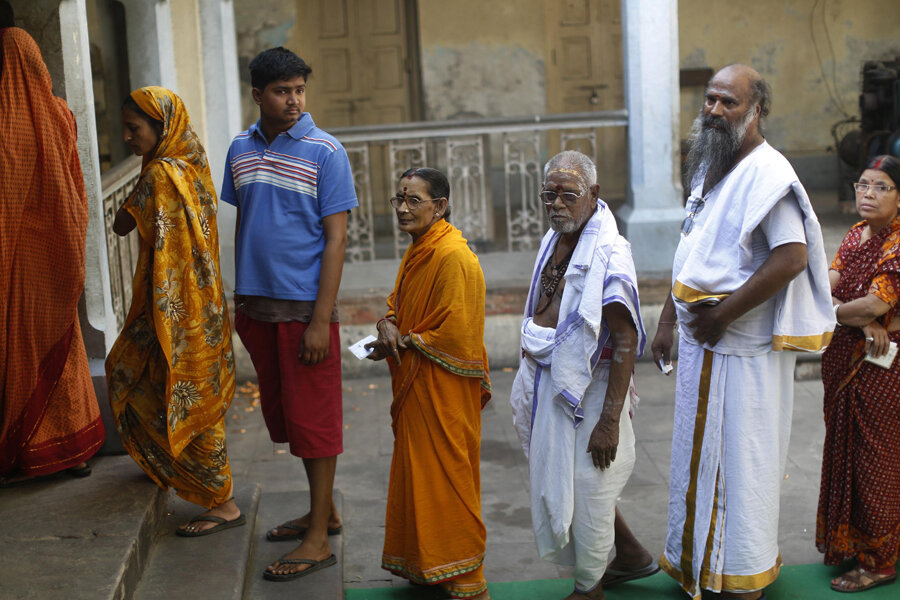Indian election: Exit polls point to Modi-led coalition landslide
Loading...
| Varanasi, India
Right-wing Hindu nationalist Narendra Modi appeared headed for a startling victory in India’s parliamentary elections, according to exit polls released Monday night.
The coalition headed by Mr. Modi may have won an unexpected outright majority, freeing him of the need to form alliances, according to one of the polls. Analysts cautioned, however, that exit polls have proved unreliable in past Indian elections.
The official results from India's staggered election, of which today's polling was the final stage, are due on Friday. It they are close to the exit poll figures they will mark a remarkable victory for Modi, one of the most divisive figures in Indian politics.
Indian TV stations, which had been forbidden to publish their exit polls until after the close of polling, projected Modi’s NDA coalition winning between 261 and 289 seats in the new parliament. The threshold for an absolute majority is 272 seats. If the exit polls are correct, this would be the first time an Indian government would enjoy such power for nearly 30 years. [Editor's note: The original version of this story misstated the name of Modi's coalition.]
The putative results were a grave disappointment for the ruling Congress party and its allies, whose support seems to have slumped in the wake of rising inflation and a slew of corruption scandals. They indicate that Modi’s Bharatiya Janata Party (BJP) and its allies got 38 percent of the vote, up 12 percent from the 2009 general elections. The Congress party and its allies won 26 percent, down 7 percent in the same period. Other parties, mostly regional ones, won 36 percent, down 5 percent. The results suggest that the BJP to a certain extent polarized the Hindu vote.
The BJP has refrained from claiming victory, however. “Exit polls are not exact polls,” says senior BJP leader Harsh Vardhan. “Let us wait until May 16th to know the results.”
The BJP ran a massive, well-funded electoral campaign promoting Modi as its candidate for prime minister in presidential fashion. He focused his message relentlessly on a promise of development and economic growth.
Modi “has somewhere touched the pulse of the Indian electorate and negative feelings about the Congress party have metamorphosed into positive support for him,” says political analyst Neerja Chowdhury. “He is appealing because there is a mood for change and anger at the incumbent government."
Modi is controversial because, as chief minister of the state of Gujarat in 2002, he was accused of not doing enough to halt Hindu rioters in the state who killed around 2,000 people, mostly Muslims.
Charges that he actively encouraged the massacre were not substantiated by a Supreme Court investigation, but Muslim voters have been nervous about the prospect of his forming a government.






